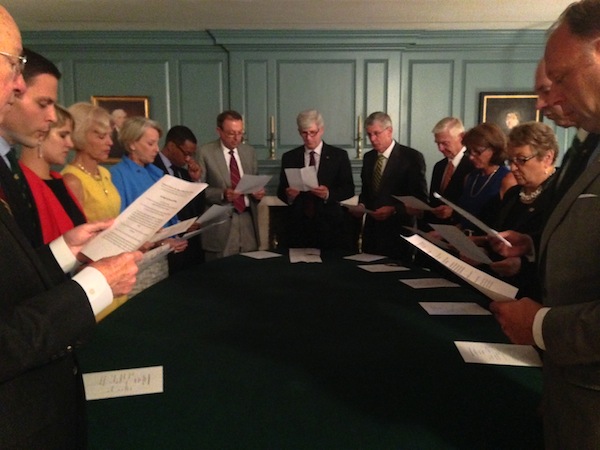The Board of Visitors’ Committee on Academic Affairs discussed incoming class demographic trends in their meeting Thursday morning at the College of William and Mary.
In a presentation to the committee, Interim Associate Provost for Enrollment and Dean of Admission Tim Wolfe ’95 M.Ed. ’01 presented data from the Classes of 2016, 2017 and 2018, comparing the numbers to those from the Class of 2008, whose students entered in 2004. Measurements included class size, the number of in-state students, as well as data on diversity among the students in each class.
“I’m biased, but I think where we’ve done a fantastic job, in light of the growth of the [incoming classes], is that we’ve managed to maintain the selectivity factors and the strength of the incoming class, and keep it the same,” Wolfe said.
The College has seen a growth in applications and an increase in size of each of the last three incoming classes, with the Class of 2018 at 1514 students. As a state school, Wolfe said the College’s goal is to ensure that 65 percent of each class is comprised of students from Virginia. When the students initially entered, the Class of 2008 hit that number, while the Classes of 2016, 2017 and 2018 were made up of 64, 64 and 63 percent in-state students, respectively. However, Wolfe noted that these numbers didn’t take into account transfer students, 75 to 80 percent of whom hail from Virginia.
In terms of out-of-state students, Wolfe said each entering class typically has students from between 45 and 48 of the U.S. states. New Jersey, Pennsylvania, Maryland, New York and Massachusetts are the most common states from which out-of-state students apply. The only state unrepresented in the last four years is North Dakota.
“I was hoping to find some amazing, interesting trends, but I’m not sure I did,” Wolfe said. “I think what we see is that certainly there remain some usual suspects in terms of the states that we see students coming from, but there are always fluctuations in any given year. We are seeing some growth in areas like California. There’s no doubt that we’re doing our best to make sure there’s an international search.”
The number of international students rose from 69 to 115 in the Classes of 2017 and 2018, respectively, Wolfe said. That number is up from 24 in the entering class in 2004. The number of Asian students has also risen over the years, from 87 in the Class of 2008 to 143 in the Class of 2018. The percentage of students of color has also increased: 20 percent of the entering Class of 2008 to 30 percent in the entering Classes of 2016, 2017 and 2018.
Wolfe mentioned the benefits of actually meeting members of the incoming class as they walk through the Sir Christopher Wren Building during the Convocation ceremony.
“I’ve made so many presentations and we always talk about numbers, and indeed, I think our class looks great on paper,” Wolfe said. “Dare I say it, they look even better in person.”
Other members of the committee, including Vice Rector Robert E. Scott J.D. ’68, also discussed the success of this year’s Convocation ceremony. Following Scott’s opening remarks, Provost Michael Halleran delivered a brief presentation on the recent U.S. News and World Report rankings. He noted that this year the College’s spot on the list has not changed much, and that the rankings do not yet take into account the effects of the William and Mary Promise, approved in Spring 2013.
After Halleran’s presentation, Faculty Assembly liaison and Associate Professor of Law Eric Chason spoke about the assembly’s plans for the year. Among other goals, the Assembly hopes to allow non-tenure eligible faculty to run for positions. That measure will go up for several votes this fall.
Chason also discussed the Faculty Assembly’s resolution on gender climate, which recommends to the College that various faculty members serve as liaisons to the assembly, reporting on the general gender climate on campus, as well as any incidents of sexual assault.
“One thing the Faculty Assembly will start working on is the war on gender climate and sexual assault, which at this point is also being pushed for by the Department of Justice Office of Civil Rights investigation, which us and [63] other colleges and universities are a part of,” Chason said. “At this stage now, we’re hoping to work with the rest of the university with efforts in this area.”
Following Wolfe’s presentation, the committee entered closed session and adjourned.

